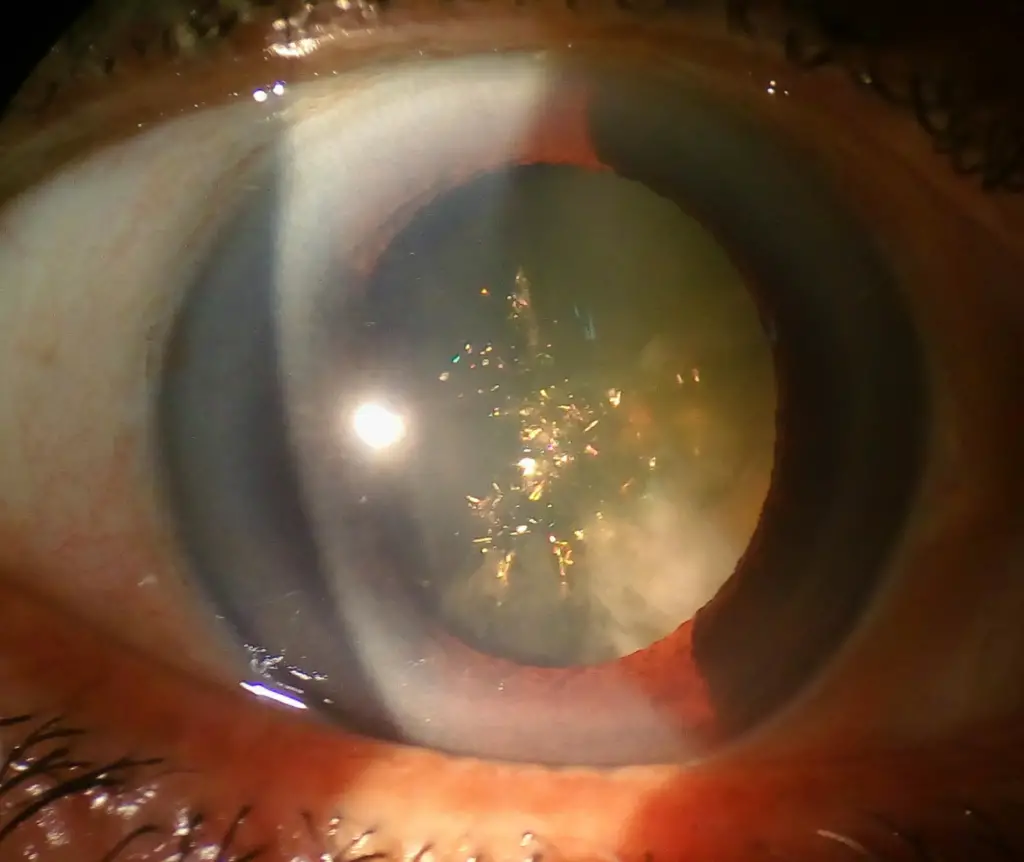Ever heard of the Christmas Tree Cataract? It’s this rare type of cataract that happens when some proteins in the eye’s crystalline lens turn into colorful needle-shaped structures that look like tinsel.This change in your eye is linked to getting older and having too much calcium floating around in there. Christmas Tree Cataract and Myotonic Dystrophy often go hand in hand, as it’s commonly seen in patients with this genetic condition, which can lead to early-onset cataracts.
What is a Christmas tree cataract also known as?
So what else do people call this Christmas Tree Cataract thing? Well, you might hear it called Cerulean Cataract, Blue Dot Cataract, Blueberry Muffin Cataract, or even just Cataract Christmas Tree. This type of cataract can be quite distinctive due to its needle-shaped appearance within the nucleus of the lens.
What is the cause of Christmas tree cataract causes?
The exact cause of this condition is not known, but it is believed to be related to the formation of calcium deposits in the eye’s lens. These deposits can take on a tree-like appearance, hence the name Christmas Tree Cataract.
While this condition may not cause any noticeable vision problems, it is important to understand its causes, symptoms, research, and treatment options.
Also read : Vertical heterophoria may be the cause of your Headaches, dizziness, off-balance

When is Christmas Tree Cataract seen?
It is mostly seen in Patient with Myotonic dystrophy
christmas tree cataract myotonic dystrophy is associated with posterior subcapsular type of pre-senile cataract. Christmas tree cataract is typically seen in this condition.
Myotonic dystrophy is a genetic disorder that affects the muscles and other body systems. It is caused by an abnormality in the DNA, which leads to the production of faulty proteins that interfere with muscle function.
The connection between Myotonic Dystrophy and Christmas Tree Cataract is a bit mysterious, but it seems to be related to the abnormal protein production that occurs in the disorder. These proteins may accumulate in the lens of the eye, leading to the formation of the distinctive opacities within the nucleus of the lens.
While Christmas tree cataract is not unique to myotonic dystrophy, it is a common symptom of the disorder and can be a useful diagnostic tool. If someone presents with this type of cataract, it may prompt doctors to investigate further for signs of myotonic dystrophy.
Christmas Tree Cataract symptoms
So, what kind of symptoms might you notice if you’ve got one of these Christmas Tree Cataracts? Well, your vision might get a bit blurry or cloudy, especially at night. You might be sensitive to bright lights, and your ability to see colors could take a hit. Some people even experience double vision or halos around lights. While Christmas Tree Cataract is generally considered a benign type of cataract, it can still have a significant impact on a person’s quality of life.
Symptoms :
- blurred or cloudy vision,
- difficulty seeing at night,
- sensitivity to light, and
- decreased color perception.
- Some people with this condition may also experience double vision or halos around lights.
Discussion
Christmas tree cataract consists of highly refractile multicolored “needles” crisscrossing the lens fibers of the deep cortex. The fact that the colors vary according to the angle of the incident light, and that in retroillumination only a dim outline of the cataract is seen, would suggest that Christmas tree cataract is a diffractive phenomenon.
Diagnosis can be done through Colour photography. Colour photography show highly refractile multicolored “needles” crisscrossing the lens fibers.
Christmas Tree Cataract case study
In this 90 y.o. patient, the slit-lamp examination after pupillary dilatation displayed vivid multi-colored glistening opacities with still good visual acuity.

A magnified view using direct focal illumination revealed a spectacular array of polychromatic needle-shaped crystals traversing all directions and cutting across the natural limits of the lens fibers, located in the deep cortex and anterior nucleus of the lens, giving the appearance of colored lights decorating the branches as on a Christmas tree.
These refractile opacities can be found in a variety of colors, including red, green (hence the name), blue, pink, and gold.
Case study 2
A 80 yr old woman who complained of Glare and decrease of vision.

Treatment of Christmas Tree Cataract
Treatment options depends on the severity of the condition. In mild cases, no treatment may be necessary as the cataract does not significantly affect vision. However, if the cataract is causing visual impairment, surgery may be required.
Cataract surgery involves removing the cloudy lens and replacing it with an artificial one just like cataract. This procedure is generally safe and effective, with a high success rate in restoring vision.
If you suspect that you have Christmas Tree Cataract, it is important to see an eye doctor as soon as possible. Your doctor will perform a comprehensive eye exam to determine the extent of the cataract and whether it is affecting your vision.
Discover more from An Eye Care Blog
Subscribe to get the latest posts sent to your email.


You must be logged in to post a comment.